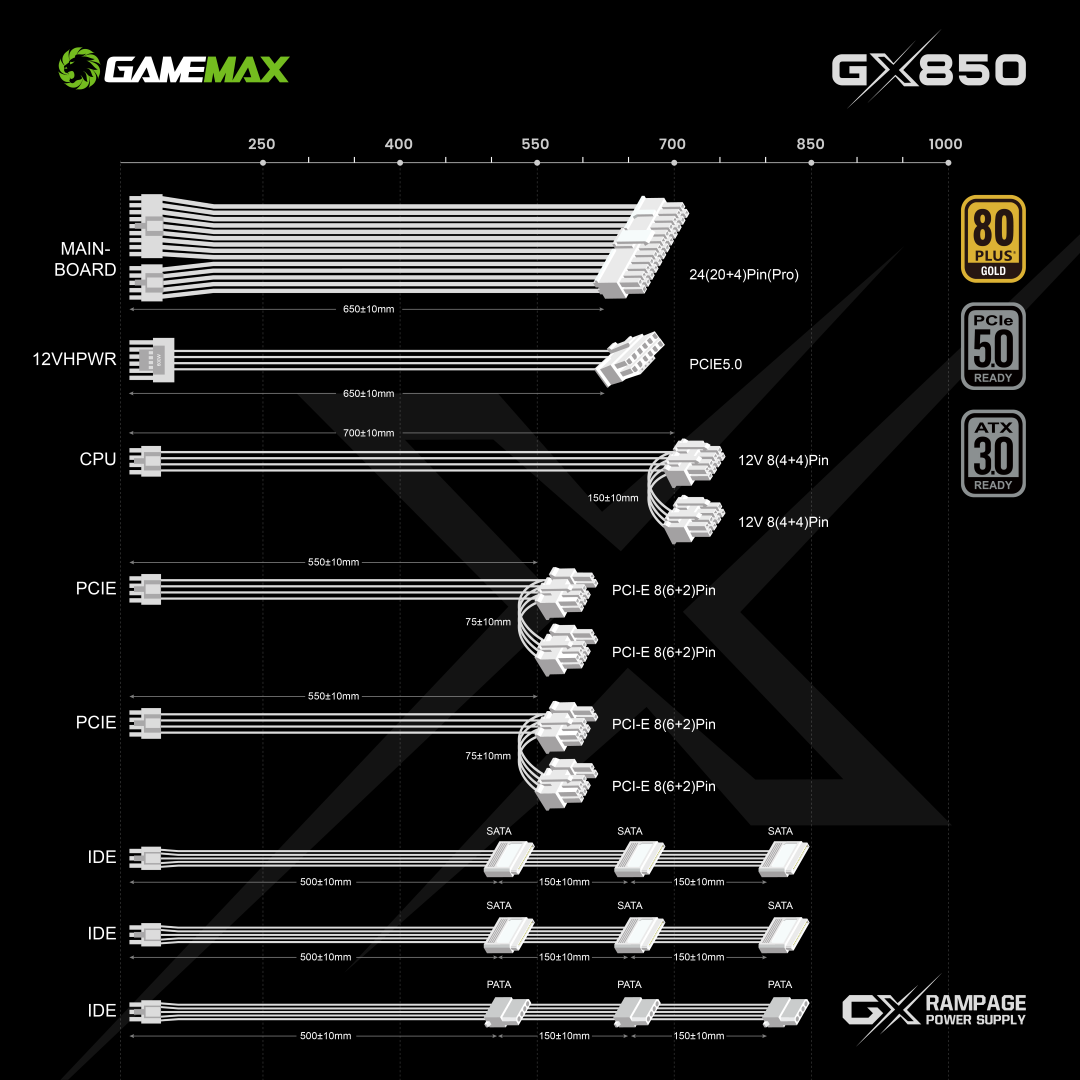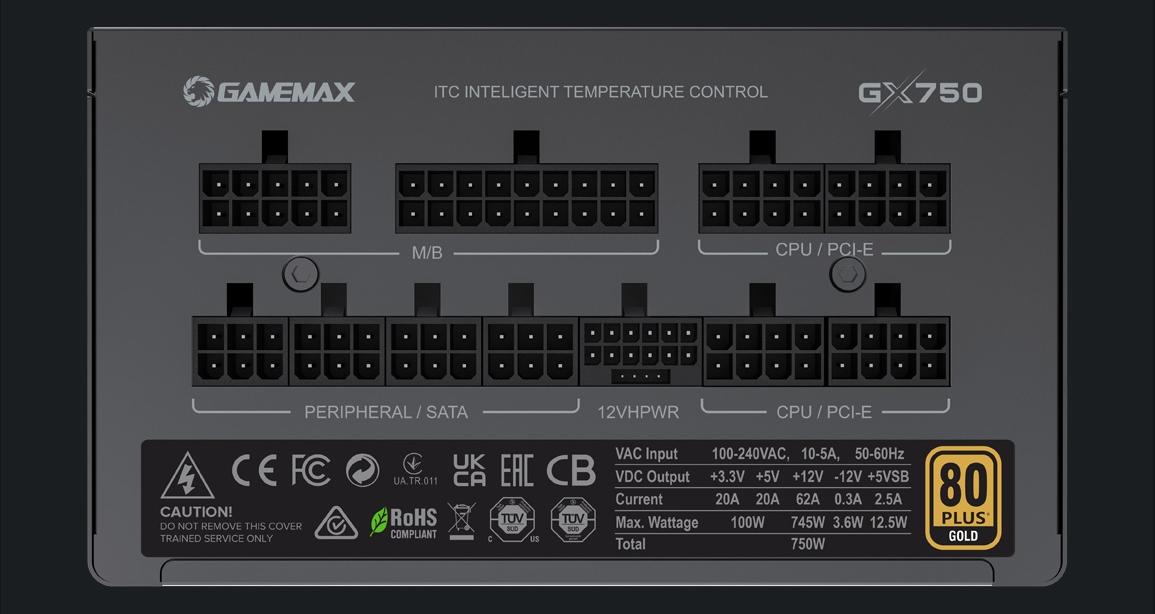As the core power supply interface for motherboards, the 24-pin design upgraded from the 20-pin version under the ATX 2.3 specification. Its key improvement lies in expanding the +12V power supply channels from a single to dual circuit, with each channel supporting 10A current, boosting the total power to 240W. This design not only meets the power demands of multi-core processors but also provides more stable power for components like RAM and chipsets through independent 3.3V and 5V output lines. Notably, the 24-pin connector features an anti-misinsertion 卡扣 (latch design), allowing users to quickly install it by aligning the notch on the connector edge.

In the server sector, the EPS 8-pin connector (Enhanced Power Supply) has become the standard. Composed of two 4+4-pin groups, each supporting 12V/10A output, it delivers a total power of 240W. Its unique gold-plated contacts and reinforced casing ensure stable connections in high-temperature and high-vibration environments. For example, GAMEMAX’s server power solutions using EPS connectors maintain over 90% efficiency even at 45°C, as validated in industrial-grade server setups.
Modern high-end CPUs like Intel Core i9-14900K have peak power consumption exceeding 300W, making traditional 4-pin connectors inadequate. The 8-pin EPS connector doubles the +12V channels, increasing power supply capacity to 240W. Its dual-spring contact structure reduces contact resistance to below 5mΩ, significantly minimizing heat generation. In overclocking scenarios, the 8-pin connector, paired with 12VHPWR power supplies, supports CPUs to reach 200% of their rated power within 100 microseconds, ensuring stable performance during extreme loads.
To support older motherboards, manufacturers like GAMEMAX offer detachable 4+4-pin connectors. This design allows flexible configuration: users can use a single 4-pin for legacy motherboards or combine both for 8-pin support. Test data shows that detachable connectors improve contact stability by 15% compared to fixed types, ideal for users frequently upgrading hardware.

For 600W-class GPUs like the RTX 4090, PCI SIG introduced the 12VHPWR connector. With a 16-pin design (12 power lines + 4 signal lines), each power line supports 9.2A, enabling a total power of 600W. Compared to traditional 8-pin connectors, 12VHPWR increases pin spacing to 1.27mm and uses gold-plated stamped terminals, expanding the contact area by 40%. It utilizes Sideband Signals for dynamic power negotiation between the power supply and GPU, adjusting power delivery in real-time based on load.
Addressing the earlier 12VHPWR connector overheating issue, PCI SIG’s ATX 3.1 specification introduces the 12V-2x6 connector. Maintaining 16-pin physical compatibility, it optimizes pin alignment by recessing 4 sensing pins to ensure power is only supplied after secure connection. New power tiers (150W, 300W) support H+ (9.2A) and H++ (12A) current specifications, extending cable lifespan at 105°C from 92 to 168 hours. GAMEMAX’s latest power supplies, such as the GAMEMAX MPG A1250GS PCIE5, natively support this interface, handling 3x GPU transient power spikes to meet the 200% peak power demands of RTX 5090-class graphics cards.
The SATA 15-pin connector features an L-shaped anti-misinsertion design, integrating 3.3V, 5V, and 12V power lines (2A each). Its unique contact arrangement (VCC-COM-GND alternation) suppresses electromagnetic interference, ensuring stable power delivery alongside data transmission. Testing shows voltage fluctuations on the 3.3V line are controlled within ±3%, satisfying the strict power requirements of SSDs.
While being phased out by SATA in consumer devices, Molex 4-pin connectors remain prevalent in industrial setups. Their metal casing and latch design withstand 50N of insertion force, suitable for frequent hardware swaps. For example, in mining rig clusters, GAMEMAX-customized Molex cables provide 12V power to multiple GPUs, with each connector supporting 15A current reliably.
Use the “Peak Power × 1.5” formula for selection:
High-end gaming systems (RTX 5090 + i9-14900K): 600W (GPU) + 250W (CPU) = 850W → Recommend a 1000W GAMEMAX power supply.
Multi-drive NAS (8×14TB HDD + EPYC 7452): 8×10W (storage) + 150W (CPU) = 230W → Opt for a 400W GAMEMAX unit.
GPU Power: RTX 5080 requires dual 8-pin or single 12VHPWR; RTX 5090 mandates the 12V-2x6 interface.
Storage Expansion: Allocate an extra 50W for every 4 SATA devices.
Overclocking Needs: A 5.5GHz-overclocked i7-14700K requires a dedicated 200W for CPU power.
Replace stock flat cables with GAMEMAX nylon-braided cables to reduce impedance by 10%.
Use 90° angled connectors to minimize internal case clutter.
Choose modular power supplies like the GAMEMAX 昆仑 MU-1000G, which features clearly grouped 12V-2x6 independent channels for easy cable management.
The released ATX 3.1 standard mandates 100,000 thermal cycle tests for connectors and introduces Dynamic Power Allocation, allowing real-time +12V output adjustment for up to 94% efficiency. It also boosts PCIe slot transient power support to 2.5x (75W slots handle 187W peaks), enhancing motherboard-GPU power collaboration.
GaN-based power supplies, like GAMEMAX’s PRIME TX-1000G series, reduce size by 30% while supporting 600W via 12V-2x6 connectors. These units achieve ripple noise below 30mV under full load, 50% lower than traditional silicon-based solutions, ensuring ultra-stable power delivery.
Industry efforts are exploring integrating PCIe 5.0 with USB4, potentially enabling GPU power via USB Type-C. This design could support both 100W PD charging and 600W GPU power, though challenges like protocol compatibility and EMI suppression remain to be solved.
The evolution of power supply connectors reflects not just technical progress but also the collaborative development of the hardware ecosystem. From ATX 2.0 to PCIe 5.1, each interface embodies engineers’ pursuit of performance, stability, and compatibility. For users, understanding these connectors’ technical details and applications is key to building efficient, reliable systems. With the adoption of ATX 3.1 and GaN technology, future power connectors will deliver higher power density in smaller form factors, powering the next generation of hardware innovations.